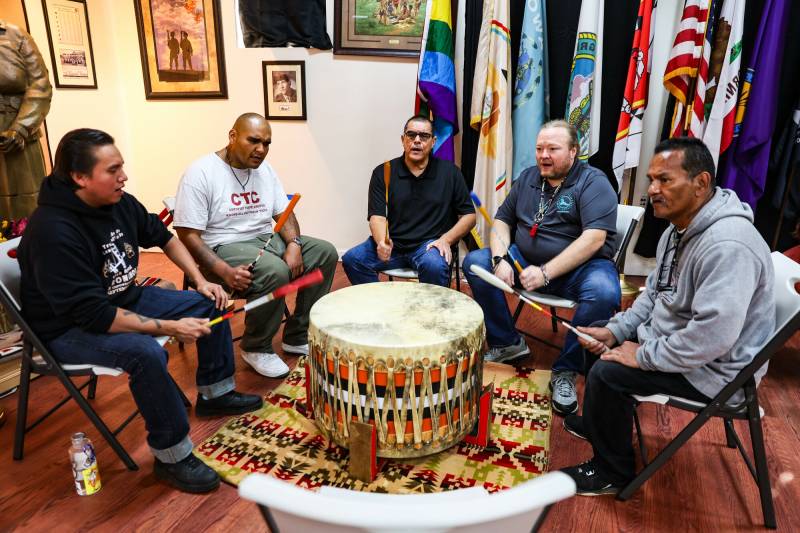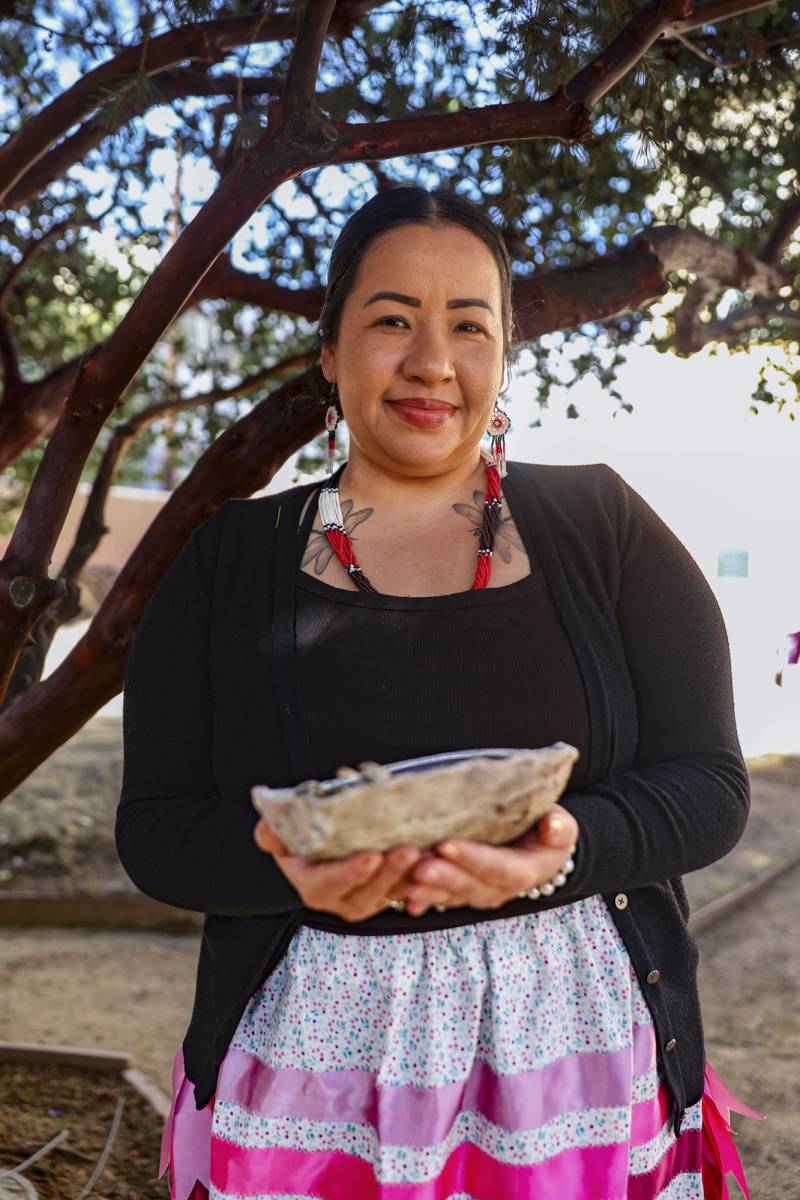Inside the Friendship House, a rhythmic drum beat fills the air as clients gather in a circle, chanting a Lakota battle song. For Priscilla Lenares, the sound transports her back 11 years to her own time as a patient at the Native-led recovery center in San Francisco.
“I remember hearing the drum for the first time, and tears fell from my eyes,” she recalled.
Today, Lenares’ life is on track, but her childhood in Bakersfield was marked by gangs, violence and pervasive substance use. She told KQED that her parents struggled with addiction, and by middle school, she was smoking methamphetamine on weekends. At 18, she was dealing drugs to support her habit. Over the next decade, Lenares cycled through 10 treatment programs before boarding an Amtrak train to San Francisco, a mother of three children, carrying nothing but hope that her time at the Friendship House would be different.
The treatment center is a unique in-patient program combining Western medicine, like individual counseling, with traditional healing practices like smudging. The staff treated Lenares like family, and she found solace in singing prayers in the sweat lodge.
This month, Medi-Cal began to support more people like her by expanding coverage to include traditional healing practices like music therapy, rituals and ceremonial dances.


